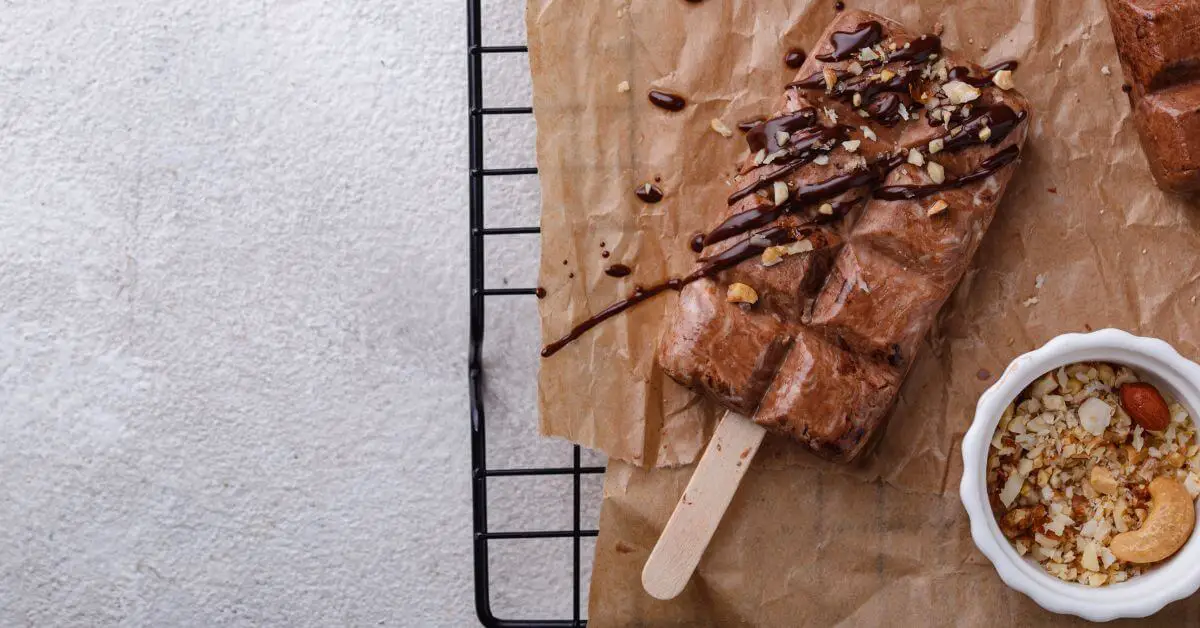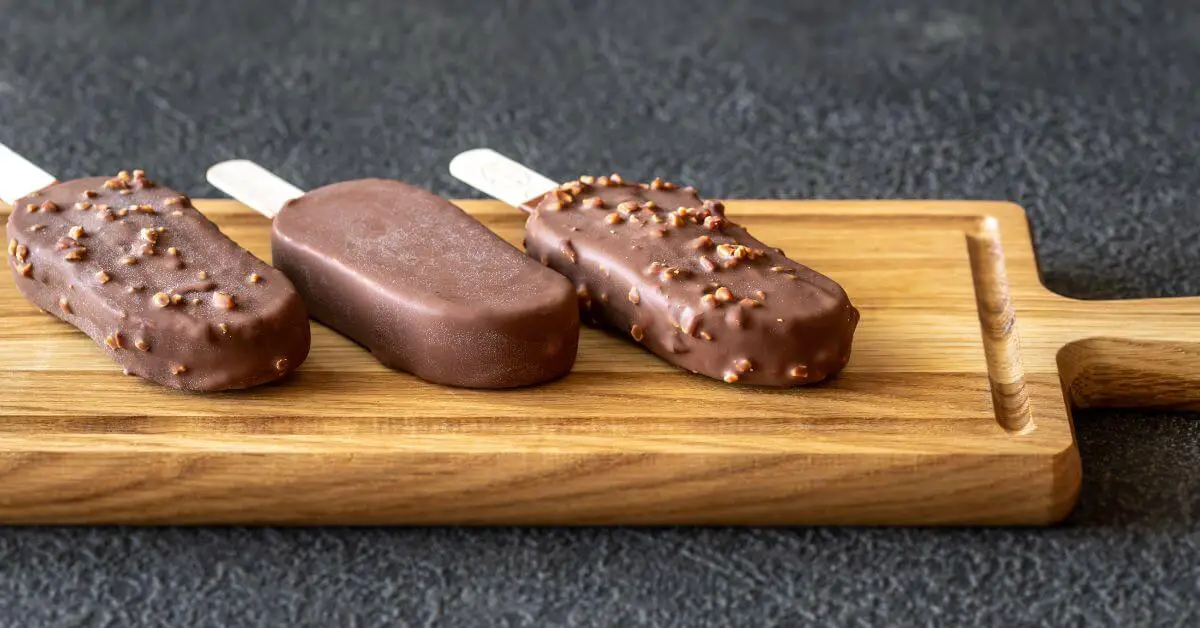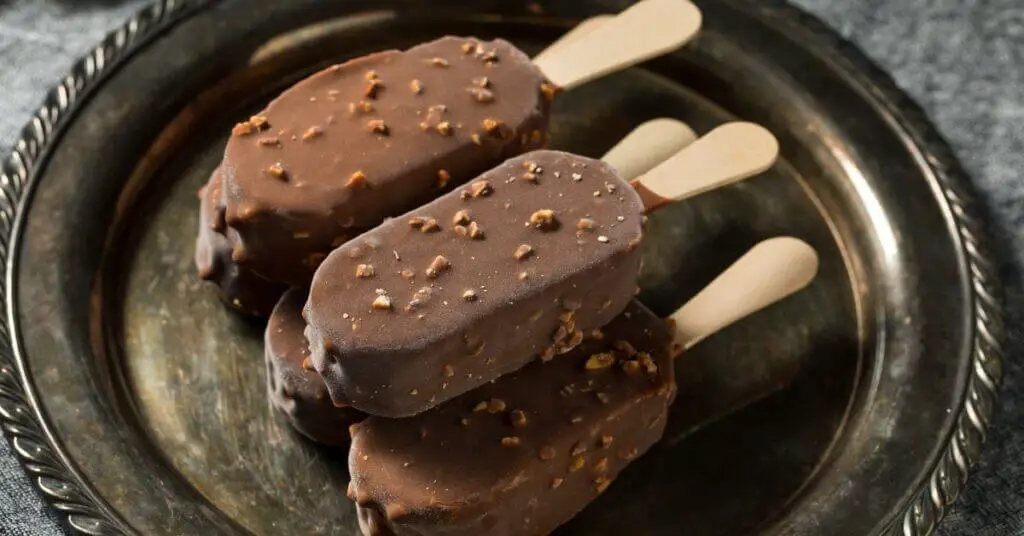Ice Cream Bars have evolved significantly from their humble beginnings to become a staple in the world of frozen desserts. These delightful treats, which combine the creamy richness of ice cream with the convenience of a bar, have captivated taste buds globally. The journey starts from an occasional luxury to an accessible indulgence reflects a fascinating blend of culinary innovation and cultural adaptation.
Types of Ice Cream Bars
The world of ice cream bars is diverse and ever-expanding, offering a plethora of choices for every palate:
- Classic flavors like vanilla and chocolate continue to be perennial favorites.
- Gourmet and artisanal trends have introduced sophisticated flavors like salted caramel and espresso.
- For those seeking dairy-free options, there are now bars made with almond, soy, and coconut milk.
This variety caters to a broad spectrum of dietary preferences and tastes, making it a versatile dessert choice. Artisanal producers have elevated the humble ice cream bar to a gourmet experience, infusing them with exotic ingredients and innovative flavor combinations. Meanwhile, the rise of veganism and lactose intolerance has spurred the development of dairy-free alternatives, ensuring that everyone can enjoy this frozen treat. Explore the List of Ice Cream Flavors to discover the wide range of options available.
Ingredients and Production
The production involves a delicate balance of ingredients and techniques:
- Traditional bars typically contain milk, cream, sugar, and flavorings.
- Artisanal producers often opt for locally sourced, natural ingredients to enhance flavor and quality.
- Mass production methods prioritize consistency and shelf-life, often incorporating stabilizers and preservatives.
Nutritionally, ice cream bars can vary significantly. While traditional bars are often rich in sugar and fat, newer versions aim to reduce these components, offering healthier alternatives. The choice of ingredients not only influences the taste and texture but also the nutritional profile of the ice cream bar. For those concerned about dietary restrictions or allergies, the Nutritional Value of Ice Cream provides essential information to make informed choices.
Global Variations
Ice cream bars have taken on unique forms around the world, influenced by local tastes and ingredients:
- In Asia, flavors like green tea and red bean are popular.
- European variants often include rich, creamy textures and sophisticated flavors like tiramisu.
- In the Americas, there’s a preference for bold, fruity flavors and combinations.
These regional specialties offer a glimpse into the cultural diversity and culinary creativity. Each country’s version of this frozen treat tells a story of local preferences and culinary traditions, making ice cream bars a fascinating subject for gastronomic exploration.
Popular Culture
Ice cream bars have made a significant impact in popular culture, often featured in media and endorsed by celebrities. They appear in numerous movies and TV shows, symbolizing comfort, nostalgia, and indulgence. Marketing campaigns frequently leverage their universal appeal, often with celebrity endorsements, to connect with a broad audience. The portrayal of ice cream bars in media underscores their status as a beloved treat across generations. For more insights into their cultural significance, check out Ice Cream in Popular Culture.
The Science Behind Ice Cream Bars
The allure of ice cream bars lies not just in their taste but also in their unique texture and consistency. The science behind these treats involves:
- Careful temperature control to achieve the perfect balance between solidity and creaminess.
- Advanced freezing techniques that prevent the formation of large ice crystals, ensuring a smooth texture.
Understanding the science of ice cream bars enhances appreciation for the craftsmanship involved in creating these delightful treats. The intricate process of balancing ingredients and controlling temperature plays a crucial role in determining the final quality of the ice cream bar.
Consumption Trends and Statistics
The popularity of ice cream bars is evident in their robust sales and market presence. Consumer preferences have shifted over the years, with an increasing demand for gourmet, artisanal, and health-conscious options. Market analysis reveals that ice cream bars appeal to a wide demographic, from children seeking a sweet treat to adults indulging in a gourmet dessert. This broad appeal has driven innovation and variety in the market, catering to evolving consumer tastes and dietary needs.
Health and Nutrition
When considering the health and nutrition aspects of ice cream bars, it’s important to look at their caloric content and nutritional value:
- Caloric Content: The calorie count in ice cream bars can vary widely. Traditional bars made with cream and sugar are higher in calories, while newer, health-conscious versions may use sweeteners like stevia or erythritol and dairy alternatives to lower the calorie count.
- Nutritional Value: In terms of nutrition, ice cream bars generally provide calcium and protein, especially those made with real dairy. However, they can also be high in saturated fat and sugar, contributing to their delicious taste but also to higher calorie counts.
Comparison with Other Frozen Desserts:
- Ice cream bars typically have a higher fat content compared to other frozen desserts like sorbets or frozen yogurt, which often have lower fat but may have similar sugar levels.
- Frozen yogurts can offer probiotics and have a lower fat content, making them a potentially healthier alternative.
- Sorbets, being dairy-free, are a good option for those with lactose intolerance, but they are usually high in sugar.
Understanding these aspects can help in making informed choices based on dietary preferences and health considerations. For detailed nutritional information, refer to the Nutritional Value of Ice Cream.
DIY Ice Cream Bars

Serving and Pairing Ideas

Ice cream bars are not just a solo treat; they can be a star in various dessert pairings and menu ideas. Here are some creative ways to serve them:
- Dessert Pairings: Elevate your dessert game by pairing ice cream bars with complementary items. For instance, a chocolate ice cream bar goes well with a glass of red wine or a cup of espresso. A fruit-flavored bar can be paired with a light sparkling wine or a fruit salad for a refreshing combination.
- Seasonal Serving Suggestions: Match your ice cream bars with the season. In summer, opt for light, fruity flavors like lemon or strawberry. During the winter, indulge in richer options like chocolate or salted caramel.
- Occasion-based Ideas: For special occasions, you can create themed ice cream bars. For example, use red and green sprinkles for Christmas, or heart-shaped toppings for Valentine’s Day.
These ideas not only enhance the taste experience but also make ice cream bars a versatile option for various occasions and seasons. For more inspiration, explore the Pinterest Board on Dessert Pairings. Else pair your ice cream bars with a slice of Pumpkin Banana Loaf for a perfect autumnal dessert combination.
The Future of Ice Cream Bars
The future of ice cream bars is shaped by emerging trends and innovations, focusing on sustainability and eco-friendly practices:
- Emerging Trends and Innovations: The industry is seeing a surge in health-conscious and exotic flavors. Innovations include incorporating superfoods, using alternative sweeteners for diabetic-friendly options, and exploring unusual flavor combinations. There’s also a growing interest in plant-based ice cream bars, catering to vegan and lactose-intolerant consumers.
- Sustainability and Eco-Friendly Practices: Manufacturers are increasingly adopting sustainable practices, from sourcing ingredients responsibly to using eco-friendly packaging. The focus is on reducing the carbon footprint and ensuring that the production process is as environmentally friendly as possible. This shift not only appeals to environmentally conscious consumers but also aligns with global efforts to combat climate change.
These advancements indicate a dynamic future for ice cream bars, where taste, health, and environmental responsibility coexist. For insights into sustainable food trends, check out Sustainable Food Practices.
FAQs
Q: What are the most popular flavors of ice cream bars? A: Classic flavors like vanilla and chocolate remain popular, but gourmet flavors like salted caramel are gaining traction. Explore the List of Ice Cream Flavors for more options.
Q: Are there vegan options for ice cream bars? A: Yes, many brands now offer vegan ice cream bars made with plant-based milks. Check out Pinterest Board on Vegan Ice Cream for vegan varieties.
Q: How can I make ice cream bars at home? A: Homemade ice cream bars can be made with a base of cream or plant-based milk, sugar, and your choice of flavors. For recipes and ideas, visit Pinterest Board on Homemade Ice Cream.
Q: Are ice cream bars a healthy dessert option? A: While traditional ice cream bars can be high in sugar and fat, many brands now offer healthier versions with lower calories and sugar. For nutritional information, refer to the Nutritional Value of Ice Cream.
Q: Can ice cream bars be part of a gourmet dessert? A: Absolutely! Ice cream bars can be paired with other desserts or used in creative ways to form part of a sophisticated dessert offering. For pairing ideas, explore the Pinterest Board on Dessert Pairings.
Conclusion
In conclusion, ice cream bars represent a delightful and ever-evolving segment of the dessert world. From their rich history to the diverse range of flavors and types, these frozen treats cater to a wide array of tastes and dietary preferences. We’ve explored:
- The variety of flavors, from classic to artisanal and vegan options.
- The balance of ingredients and production methods that cater to nutritional needs.
- The global variations that reflect cultural influences.
- The role of ice cream bars in popular culture and their scientific underpinnings.
- Trends in consumption, health considerations, and innovative DIY ideas.
- The future of ice cream bars, marked by sustainability and eco-friendly practices.
As we look forward to the future, it’s exciting to think about the endless possibilities for experimentation and enjoyment. Whether you’re trying out new recipes at home or exploring the latest gourmet offerings, there’s always something new to discover in the world of ice cream bars. So, indulge your taste buds, experiment with different recipes and flavors, and enjoy the delightful journey that these frozen treats offer. After enjoying sweet, why not try a savory recipe like French Onion Chicken to complete your culinary experience?
